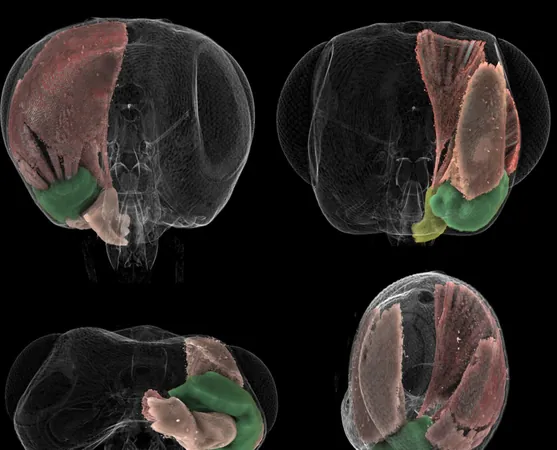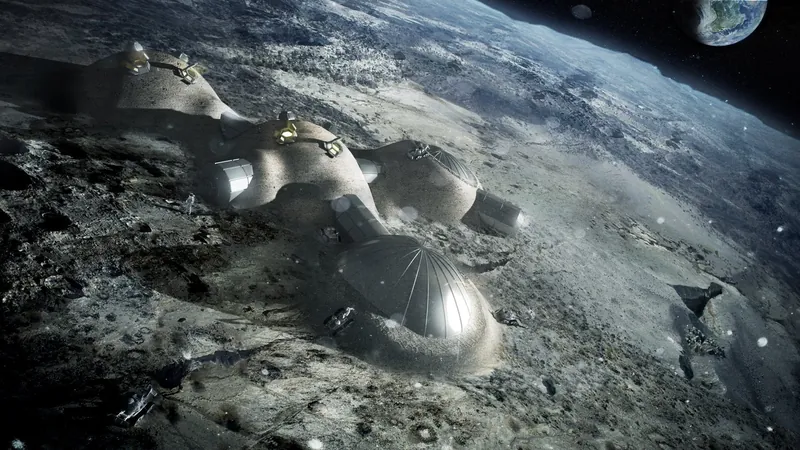
Unveiling the Sun’s Secrets: Stunning New Images Reveal Its South Pole
2025-06-11
Author: Noah
For the first time in history, the Sun’s enigmatic south pole has been unveiled, showcasing astonishing images transmitted from the Solar Orbiter spacecraft. This joint mission by the European Space Agency (ESA) and NASA has made groundbreaking observations by diving below the solar plane to explore the Sun's unchartered polar regions.
These unprecedented views have illuminated a chaotic patchwork of magnetic activity at the Sun’s pole, a critical factor in understanding the solar magnetic field's flip that occurs approximately every 11 years. As Professor Carole Mundell, ESA's Director of Science, expressed, "Today, we unveil humankind’s first-ever views of the Sun’s pole. Understanding our nearest star is vital, as it not only sustains life but also has the potential to disrupt our modern power systems. This marks the beginning of a new era in solar science."
The $1.3 billion mission, launched in 2020, captured these spectacular images in mid-March while the spacecraft dipped to an angle of 15° below the solar equator. While Earth has a clear magnetic north and south, the Sun's magnetic field is much more chaotic, currently reaching a solar maximum—a phase where the Sun is gearing up for a polarity flip.
The Solar Orbiter's initial magnetic field measurements revealed a fragmented mosaic of both north and south polar activities, confirming previous computer model predictions but never before observed. These insights into the magnetic fields at the Sun’s poles are crucial for improving forecasts of the solar cycle.
Professor Sami Solanki, who oversees the magnetic field mapping and is the director of the Max Planck Institute for Solar System Research (MPS) in Germany, acknowledged the unpredictability of these first observations: "The Sun’s poles are literally terra incognita." He emphasized the importance of tracking the rapid transformations in the Sun’s polar magnetic fields to enhance our understanding of solar activity.
The Sun’s distinctive magnetic cycle is a result of its uneven rotation. The equator spins faster (every 26 days) than the poles (33 days), stretching and twisting the magnetic field lines until they become unstable, ultimately leading to the north-south flip.
Professor Lucie Green, from UCL’s Mullard Space Science Laboratory, highlighted the significance of these findings: "The atmosphere of the Sun and its overall behavior are generated by its magnetic field and its time-dependent changes—transitioning from a relatively quiet star to a dynamic one filled with explosions. It's one thing to model the unpredictable nature of the magnetic field, but witnessing it firsthand is extraordinary."
As the solar minimum approaches in five to six years, the Sun's magnetic field will reach a more orderly state, corresponding with lowered levels of solar activity. However, current models struggle to predict the timing and intensity of the solar maximum.
Previously, NASA's Ulysses probe flew above the Sun's poles, but it lacked imaging capabilities. In contrast, the Solar Orbiter will maintain a 17° tilt angle in its orbit around the Sun until December 24, 2026, when it will adjust its orbit to a 24° tilt, eventually reaching 33° in 2029, paving the way for more groundbreaking discoveries.









 Brasil (PT)
Brasil (PT)
 Canada (EN)
Canada (EN)
 Chile (ES)
Chile (ES)
 Česko (CS)
Česko (CS)
 대한민국 (KO)
대한민국 (KO)
 España (ES)
España (ES)
 France (FR)
France (FR)
 Hong Kong (EN)
Hong Kong (EN)
 Italia (IT)
Italia (IT)
 日本 (JA)
日本 (JA)
 Magyarország (HU)
Magyarország (HU)
 Norge (NO)
Norge (NO)
 Polska (PL)
Polska (PL)
 Schweiz (DE)
Schweiz (DE)
 Singapore (EN)
Singapore (EN)
 Sverige (SV)
Sverige (SV)
 Suomi (FI)
Suomi (FI)
 Türkiye (TR)
Türkiye (TR)
 الإمارات العربية المتحدة (AR)
الإمارات العربية المتحدة (AR)